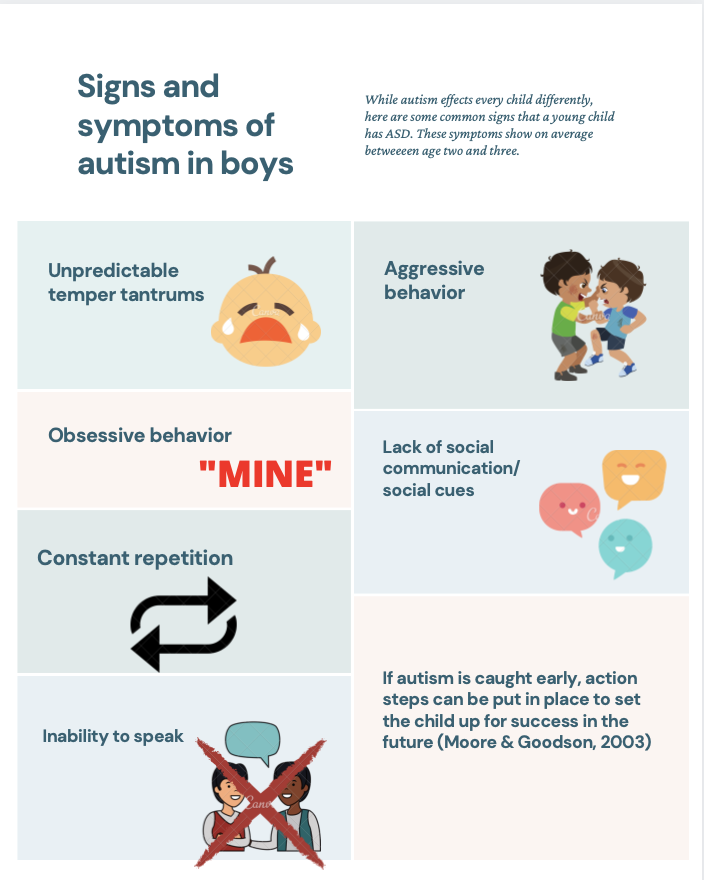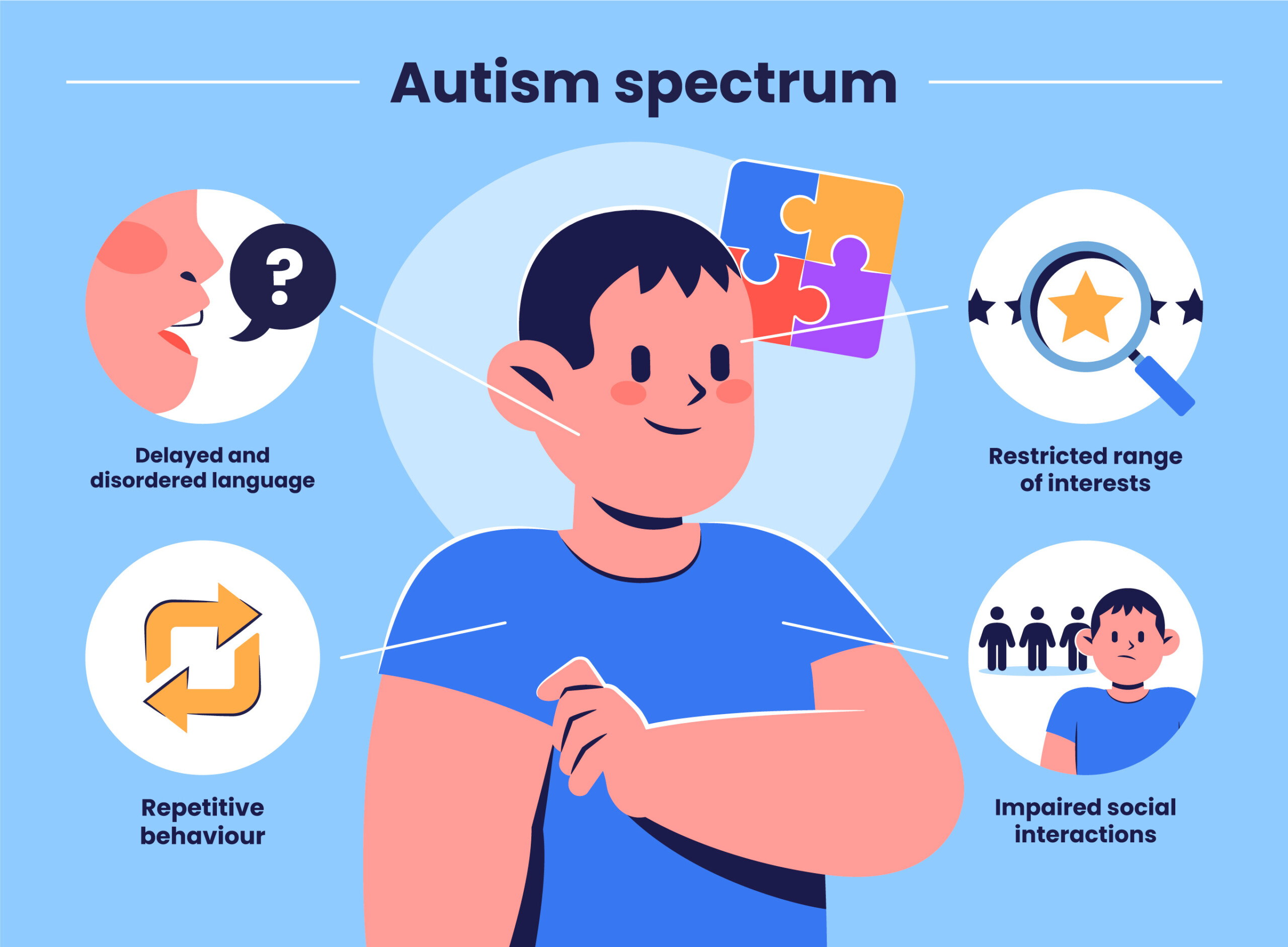The ultimate guide to working with Autism Spectrum Therapies
The ultimate guide to working with Autism Spectrum Therapies
Blog Article
Recognizing the Effect of Behavioral Autism on Daily Life and Social Interactions
You may not recognize how deeply behavioral autism impacts everyday life and social interactions. Individuals on the range usually browse a world filled with interaction difficulties and sensory overload. These challenges can lead to disappointment and seclusion, impacting their partnerships and overall wellness.
Specifying Behavioral Autism and Its Qualities
Behavior autism, typically referred to as autism spectrum disorder (ASD), encompasses a series of problems defined by challenges in social communication, communication, and recurring habits. You might discover that people with ASD usually have a hard time to analyze social cues, which can lead to misconceptions in discussions. They may discover it hard to establish eye call or participate in small talk, making social circumstances feel frustrating.
Interaction problems can show up in different means, from delayed speech advancement to a preference for utilizing less words. By recognizing these characteristics, you can cultivate an atmosphere that advertises approval and encourages effective communication, assisting people with autism flourish in their everyday interactions.
The Range of Autism: Recognizing Irregularity in Habits
Autism range problem (ASD) isn't a one-size-fits-all diagnosis; it varies widely amongst individuals. You might come across individuals that are extremely verbal and engage quickly in conversations, while others might favor singular activities or connect non-verbally.
Furthermore, the means individuals with ASD respond to sensory input can vary greatly; some may be overwhelmed by bright lights or loud sounds, whereas others prosper in promoting environments. The range also consists of differences in social interactions; some people might have a hard time to analyze social cues, while others browse social settings with loved one simplicity. Understanding this irregularity is essential, as it aids you value everyone's unique experience and dressmaker assistance to their certain needs, promoting a more inclusive setting for everyone.
Interaction Challenges Dealt With by Individuals With Autism
When you engage with individuals on the autism range, you may see their special interaction obstacles. They usually encounter troubles with both nonverbal and verbal cues, which can impact their social communications. Understanding these obstacles is necessary for promoting far better links and assistance.

Verbal Interaction Problems
Many individuals on the autism range experience spoken communication difficulties that can significantly influence their daily interactions. You may locate it testing to reveal your ideas, feelings, or requires plainly. This can result in stress for both you and those around you, as misunderstandings happen. You might battle with initiating conversations, preserving a topic, or recognizing subtleties in speech. Often, you might favor making use of easy language or repeated phrases, which can restrict your capacity to engage in much deeper conversations. Your rate, quantity, or tone may not line up with social assumptions, creating others to misunderstand your intentions. Recognizing these obstacles can aid you and your assistance network create strategies to improve communication and foster much better links with others in your day-to-day life.
Nonverbal Interaction Barriers
Spoken communication isn't the only challenge people on the autism spectrum face; nonverbal interaction barriers can be equally as considerable. You might locate it tough to translate body language, faces, and eye get in touch with, which are vital for reliable communication. These difficulties can lead to misunderstandings or misinterpretations of social signs, making interactions really feel overwhelming or complicated. You might battle to express your very own emotions with nonverbal means, leaving others unclear of your feelings or intentions. This separate can create feelings of seclusion and frustration. Recognizing these obstacles is important for cultivating understanding and compassion in your interactions. By attending to nonverbal interaction, you can discover methods to improve your social experiences and enhance your general lifestyle.
Social Interaction Influences
Social communications can commonly feel overwhelming because of the one-of-a-kind communication difficulties encountered by people with autism. You may fight with analyzing social hints, making it tough to recognize sarcasm or body movement. This can cause misconceptions or uncomfortable minutes in conversations. Additionally, initiating and maintaining conversations may feel challenging, creating anxiousness in social scenarios. You may like organized atmospheres, making spontaneous communications awkward. It's also common to experience problem in taking part in little talk, which can impede forming brand-new relationships. Acknowledging these challenges can help you locate approaches to enhance interaction, such as practicing social abilities in secure settings or utilizing aesthetic aids - Autism Behavioral Therapy. Recognizing your demands permits you to browse social communications with greater confidence and convenience.
Social Communication and Partnership Structure in Autism
While structure connections can be challenging for individuals with autism, recognizing their special viewpoints and communication designs can cultivate significant connections. You may see that lots of individuals on the range favor direct communication and may battle with social hints or tiny talk. By being straightforward in your communications, you can assist create an atmosphere where they feel comfortable.
Engaging in shared passions can additionally serve as a bridge to much deeper links. Whether it's a hobby, a favored program, or a shared passion, these typical threads can open doors to friendship.
Every Day Life Routine: Browsing Challenges and Strategies
Steering day-to-day life routines can be especially testing for individuals with autism, specifically when unforeseen changes occur. To navigate these difficulties, think about applying visual timetables or checklists.
Establishing a routine that consists of sensory breaks can also be advantageous. This aids produce an understanding environment.
Lastly, technique mindfulness strategies to take care of tension and anxiousness. Basic breathing exercises or basing strategies can make a substantial distinction. By integrating these methods, you can enhance your day-to-day regimen and reduce disruptions, making life really feel a lot more manageable.
Toughness and Capabilities of Individuals on the Autism Spectrum
Recognizing every day life regimens is just one facet of the autism experience. Numerous people on the autism spectrum possess remarkable staminas and capabilities that establish them apart. You may find that your focus to information is exceptional, allowing you to master jobs that require precision and emphasis. Your capacity to assume outside package can lead to cutting-edge solutions in numerous circumstances.
Furthermore, your memory skills my explanation typically radiate, specifically in locations of passion. Aba Therapist. This propensity for maintaining info can make you a beneficial resource in fields like art, science, or modern technology. You might also show strong aesthetic thinking, enabling you to imagine intricate concepts and resolve issues artistically
Additionally, your special viewpoint on the globe can cultivate compassion and understanding in others, enhancing social communications. Accepting these toughness not just increases your self-confidence however also assists others value the diverse talents you offer the table.
Creating Comprehensive Settings for People With Autism
Developing inclusive settings for people with autism starts with making sensory-friendly rooms that satisfy their one-of-a-kind demands. You can also foster possibilities for social communication, helping to build links and relationships. By making these modifications, you'll add to a much more welcoming ambience for every person.
Creating Sensory-Friendly Spaces
While developing sensory-friendly areas, it's essential to mirror on the distinct needs of individuals with autism. Include quiet zones where people can reenergize and pull away when overwhelmed. Consist of aesthetic routines or clear signage to help people browse the area with confidence.
Advertising Social Communication Opportunities
Designing sensory-friendly rooms not just addresses specific convenience however also establishes the phase for significant social interactions amongst people with autism. To promote these communications, create inclusive settings that welcome involvement. Organize organized activities, like art courses or group games, that encourage collaboration without overwhelming sensory input. Use visual aids and clear communication to aid everybody engage conveniently. Encourage peer mentoring, combining individuals with autism with encouraging peers who can lead them with social scenarios. In addition, consider hosting normal area occasions that celebrate neurodiversity, fostering approval and understanding among all participants. By applying these strategies, you can enhance social opportunities, helping individuals with autism build friendships and strengthen their social skills in a safe, welcoming atmosphere.

Frequently Asked Inquiries
How Can Friends Assistance A Person With Behavioral Autism?
You can support a friend with behavioral autism by being client, listening proactively, and appreciating their limits. Engage home in activities they enjoy, interact freely, and produce a comfy setting where they feel valued and understood.
What Resources Are Offered for Moms And Dads of Children With Autism?
You can check out different resources for moms and dads of children with autism, including support teams, instructional internet sites, and regional social work. Getting in touch with other parents can additionally offer important understandings and shared experiences to assist browse obstacles.
Can Behavioral Autism Change With Time?

Yes, behavior autism can change with time. You could notice changes in communication, social skills, and actions as your child expands. Early treatment and support commonly play vital functions in these developing changes.
Exactly How Do Sensory Sensitivities Impact Daily Life?
Sensory sensitivities can make daily experiences frustrating. You might fight with brilliant lights or loud noises, bring about tension or avoidance. Locating environments that fit your requirements can substantially improve your comfort and general day-to-day life.
What Prevail Misconceptions About Behavioral Autism?
You could assume behavioral autism only impacts communication abilities, yet it's even more facility. Numerous think individuals do not have empathy or knowledge, which isn't true. Understanding these misunderstandings assists foster acceptance and assistance for those on the range.
Behavioral autism, often referred to as autism range disorder (ASD), encompasses a range of problems identified by obstacles in social communication, communication, and repetitive behaviors.Social interactions can frequently feel overwhelming due to the unique interaction obstacles encountered by individuals with autism.Designing sensory-friendly spaces not only addresses specific convenience however also establishes the phase for purposeful social communications amongst individuals with autism. Motivate peer mentoring, matching people find here with autism with encouraging peers who can guide them via social scenarios. By carrying out these methods, you can improve social opportunities, aiding individuals with autism build relationships and enhance their social skills in a safe, inviting atmosphere.
Report this page